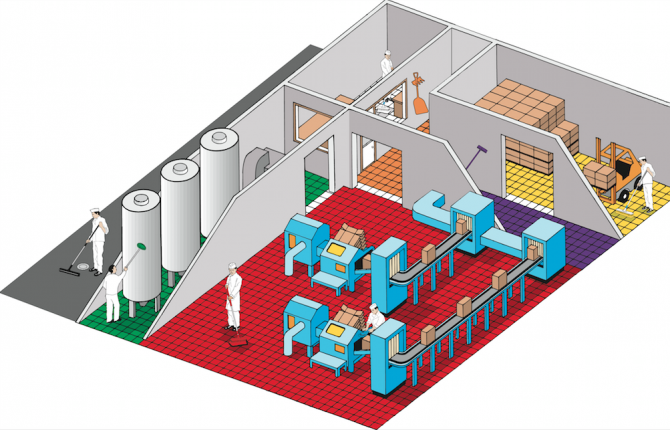
Color-coding is an effective way to minimize cross-contamination and other hazards within a sanitary processing facility. Although it is not yet a requirement, color-coding can demonstrate a company’s dedication to the quality and consistency of their products. From beverage to dairy, pharmaceutical to food processing, color-coding helps maintain a high level of safety for both their employees and end-consumers.

Now that you understand the different ways to apply color-coding in your plant, let’s find out if there is a need for color coding in your facility! A number of factors influence the decision to implement this system. To decide if color-coding is right for your processing facility, consider the below criteria:
If you answered YES to any of the above questions, your processing plant is a strong candidate for color-coding!
Once you have identified the hazards that can benefit from color-coding, be sure to keep your color assignments logical and as simple as possible. An easy rule to follow is to assign only ONE color per zone and ensure that the colors make sense in relation to your process. Additionally, double check the availability of colors in the tools you need before finalizing plans. A Rodem representative can check availability.
The next step after you have made logical color assignments is to consider where the color should be applied to guarantee the process is properly followed. Key items within a particular Critical Control Point or zone should be identified with the appropriate color to assure consistency. This allows you to easily determine when color-coded work items have been misplaced and items can be tracked with greater ease. Make sure your documentation at each point of use is also consistent with the paperwork used by your purchasing department or quality manager.
How you are going to communicate the program rollout to employees is just as important as deciding to implement and carefully planning your program! The best way to communicate the implementation is to use your facilities existing guidelines for how to communicate changes. Be sure to meet with your shift employees, include details about your color-coding program in GMP’s or other documentation and implement company wide. It is not a best practice to have one part of the plant operating on old procedures, while the other part is using the new color-coded program.

In conclusion, color-coding at your sanitary processing plant is a great way to reduce hazards and avoid cross-contamination. As you can see there are a number of ways to use this program in your facility. Be proactive and show your dedication to high quality and consistency of products while maintaining a high level of safety for both end users and employees.
Contact us to enlist the help of a pro from Rodem to help determine how to make color-coding work best for you.
**Special thank you to our manufacturing partner Remco Products for providing us with the info for this article that has been adapted from their original. Download Remco Products whitepapers here. Remco and Vikan® brands offer the most tools in the most colors for flexibility in designing comprehensive color-coding systems. Call Rodem for more info on Remco Products.**
E-mail: [email protected]
Copyright 2024 Rodem Inc. All rights reserved.
